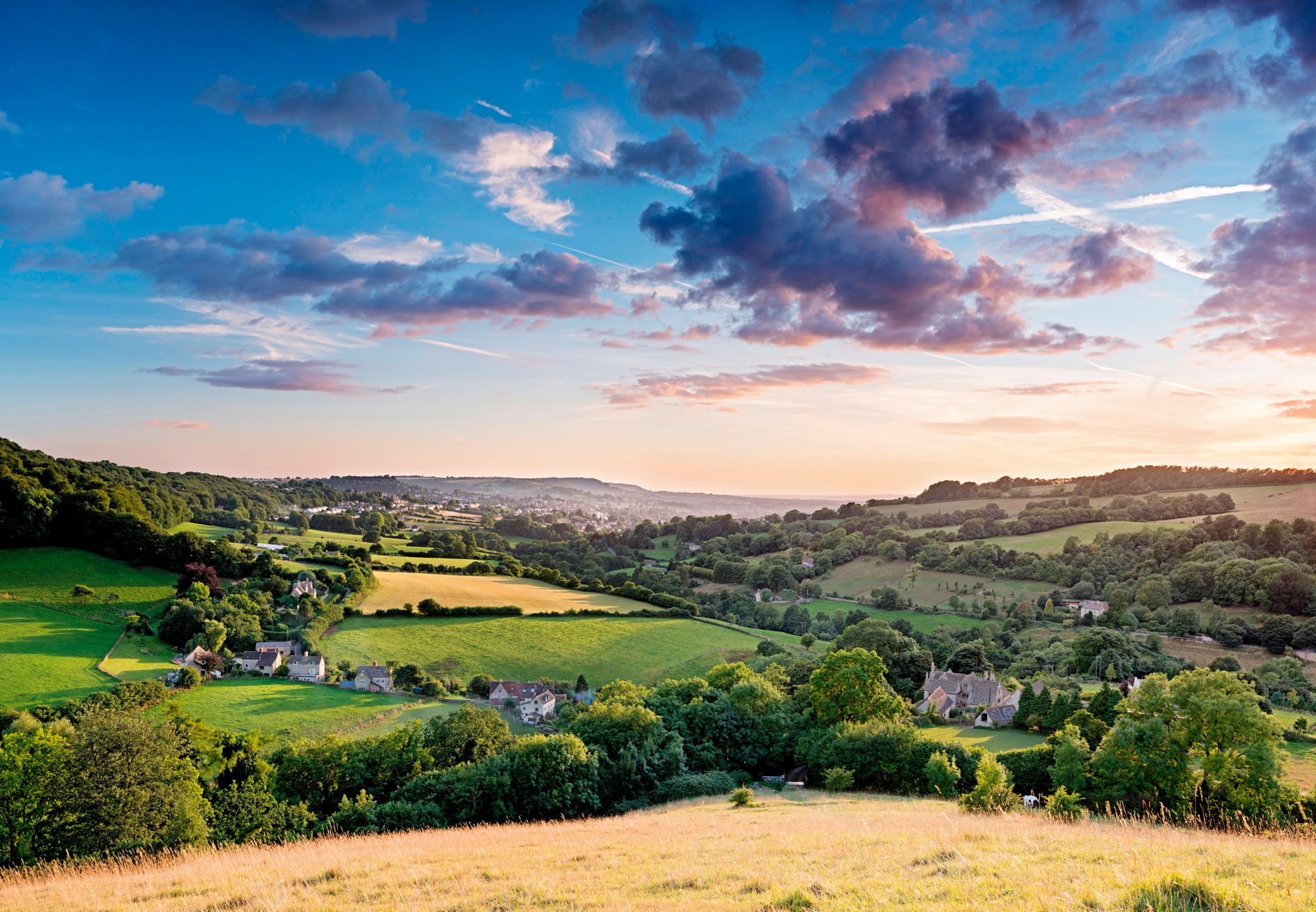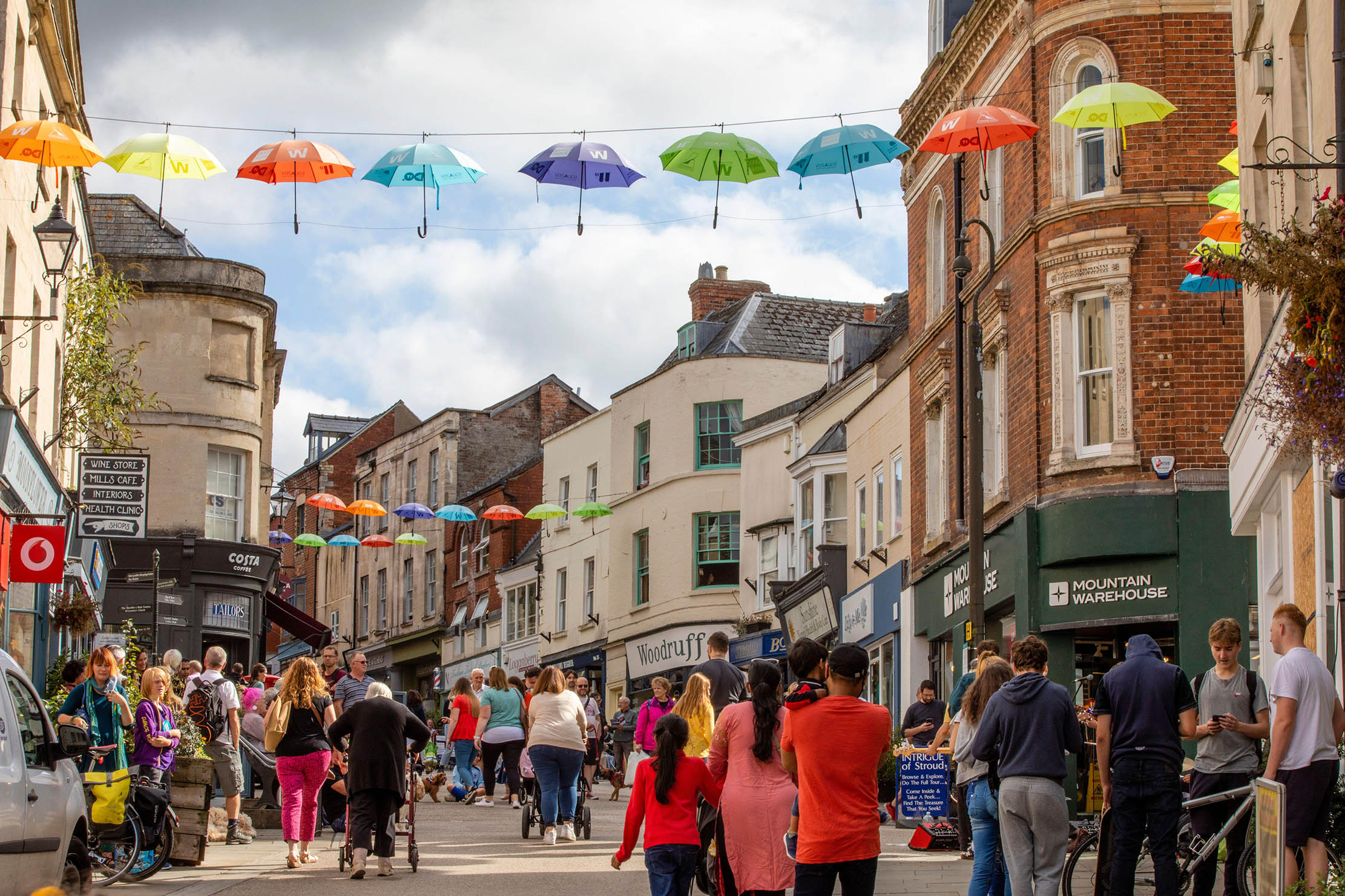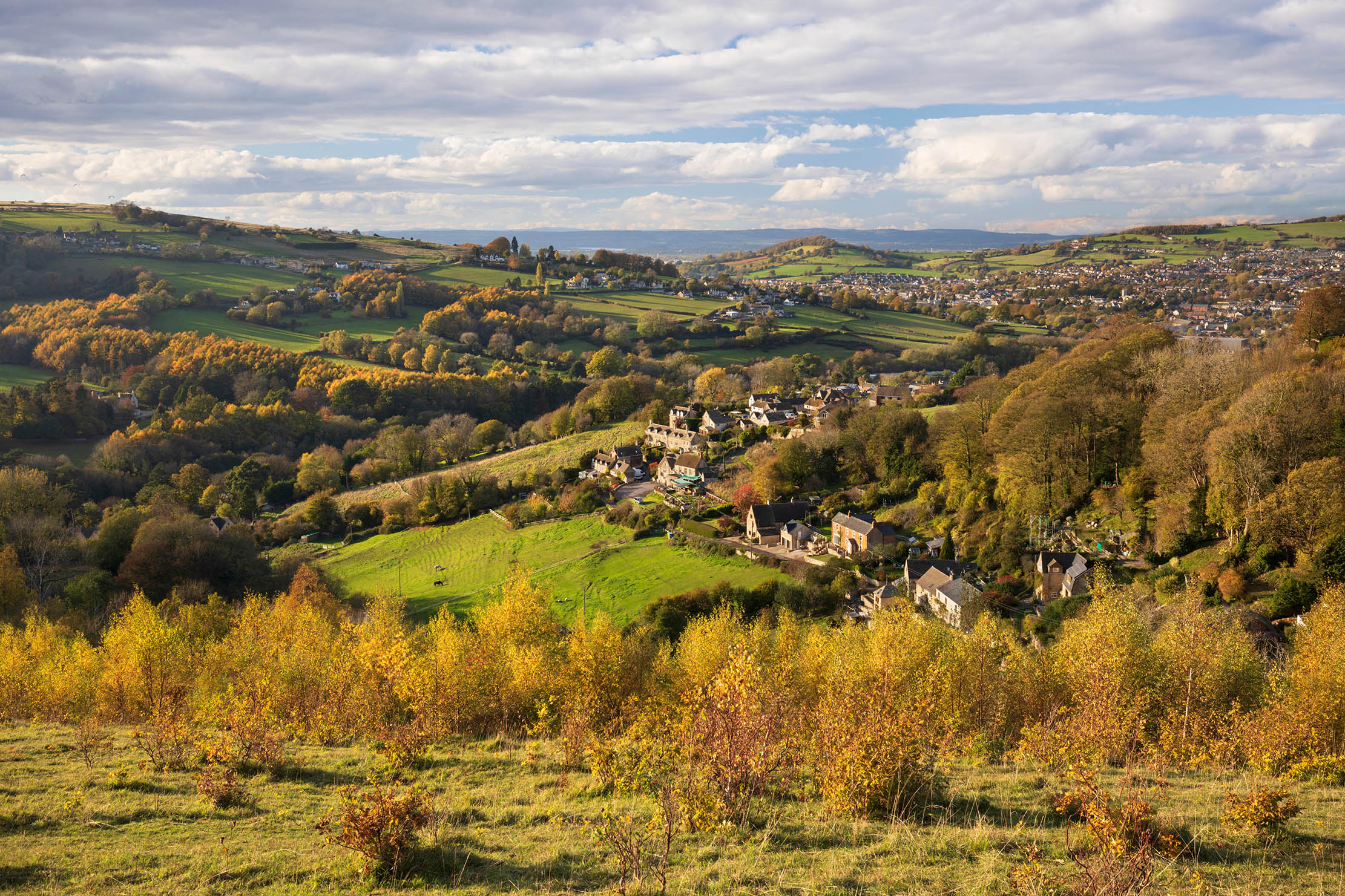The Five Valleys Walk around Stroud: From mills and canals to spectacular high-level walks through woodland
Fiona Reynolds takes the circular Five Valleys Walk around the buzzing town of Stroud — and finds it hard work, but all in a good cause.


Some 250 years ago, the five valleys that converge on Stroud in Gloucestershire rang with the sounds of industry. Mills (150 at the maximum), forges and a busy canal positioned the denizens of Stroud as pioneers of the Industrial Revolution. On the surrounding hills, a vibrant ‘horn and corn’ agricultural economy produced fat Cotswold sheep, the value of which lay in their fleeces, and plenty of grain. Stroud was a hive of industry and innovation.
It retains much of that spirit today. The town is proud of its diverse economy, lively markets and pragmatic approach, voting ‘greener’ than any other Cotswold town and revelling in a slightly bohemian, Brighton-like atmosphere. It’s undeniably beautiful, with its Cotswold-stone buildings, rural setting and charming character and is a place full of dynamism. Here are green-energy start-ups, innovative engineering companies and lots of local food growers and processors.

The annual Meningitis Now walk around Stroud provides a chance to explore all these attributes in a single, if long day. It’s called the Five Valleys Walk and involves — predictably — climbing four huge hills in a great circle around the town, taking in everything from industrial estates, converted mills and canals to spectacular high-level walks through woodland, across open hills and in stone-walled farmland.
We choose to start at Nailsworth, climbing first up the impossibly steep lane from Watledge onto Minchinhampton Common. Avoiding flying golf balls, we enjoy the soft green turf and tracks lacing the common, where cows wander peaceably. Crossing the common, we descend the equally steep Knapp Lane to Brimscombe, once a bustling port able to hold 100 vessels, where old industrial buildings sit cheek by jowl with a tumbling stream and former workers’ cottages.
Up we go again, through Lower Bourne and into the Toadsmoor Valley, where we pass a peaceful lake and amble through dappled woodland with shafts of sunshine glittering on the just-turning autumn leaves. Then we’re out in the open again, climbing past Ferris Court Farm and above the Lypiatts onto the high Cotswold plateau.

The best is yet to come, as we pass Fennells Farm, home to the fabulous Giffords Circus (the huge big top remains in our sights all day), and onto Swift’s Hill, where we admire superb views westwards. It’s a heavenly day to be in such gorgeous surroundings.
Then it’s down, down, down to the Slad Valley, rich with Laurie Lee’s indomitable spirit, and up, up, up and over the top to Juniper Hill. Here are views of Painswick’s elegant church spire, as we descend past Sheephouse Farm with its lovely stone dovecote to cross the Painswick stream. We turn uphill again, first to Pitchcombe, another beautiful village set snugly in its valley.
Exquisite houses, the beauty of Nature, and how to get the most from your life, straight to your inbox.
Only one more climb! We stride out of the village and take the longest hill yet to Stoneridge Farm where we join the Cotswold Way. This path meanders beautifully through Standish Wood, its beeches like columns in a medieval cathedral, to another gorgeous viewpoint at Randwick, looking south towards Stonehouse.
Nearly there now, we think, as we descend to the last checkpoint at Stroud Cricket Club, via a thriving vineyard and a delightful stretch of canal towpath. It isn’t really, however, as there are still four miles to go along the cycle path to Nailsworth. Happily, we are joined by friends, so we sail along to reach our starting point, sated by the beauty of the day.
What a glorious walk! Deep countryside, some of the best views in Gloucestershire, plenty of history and Nature and great companionship. And a great cause, too. In the 1980s, Stroud was afflicted by a meningitis outbreak that its residents have not forgotten. This annual walk, revived post-covid, is a lovely way to remember those affected and help ensure it won’t happen again.
Find out more about Meningitis Now at www.meningitisnow.org
Fiona Reynolds is chair of the Food, Farming and Countryside Commission, the former director-general of the National Trust, former Master of Emmanuel College, Cambridge, and the author of The Fight for Beauty. Follow her on Twitter @fionacreynolds.
